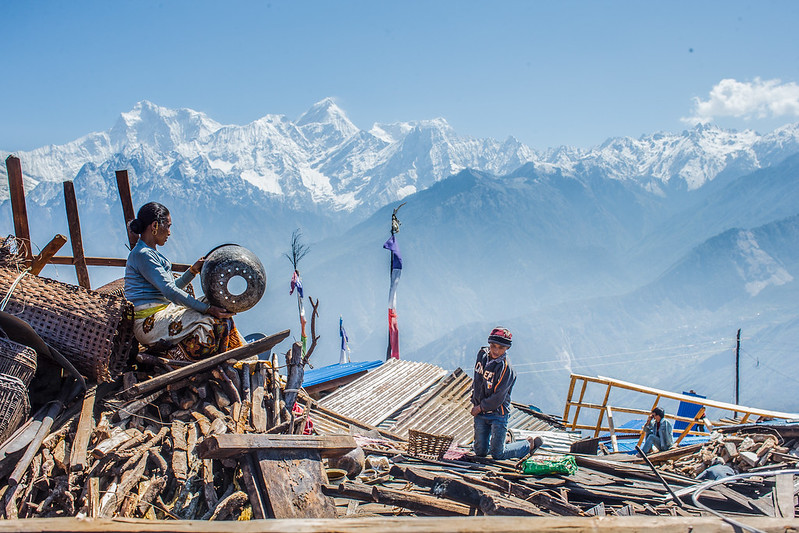
On April 25, a devastating earthquake of 7.8 magnitude rocked the central region of Nepal, claiming over 8000 lives, injuring thousands, and leaving another 2.8 million people homeless. The government of Nepal has been posed with one of its biggest disaster-related challenges in recent history. Despite the looming challenges that remain, a window of opportunity has emerged for Nepal to mobilize the energy and enthusiasm of its citizens for a better, more prosperous country. The fabric of Nepali society—which exemplifies cooperation, tolerance, and compassion— has been on clear display in the voluntary efforts of various non-governmental organizations (NGOs), civil society groups, and individuals alike. This energy marks a new beginning for Nepali society and politics.
In June, CIPE Nepal partner, Samriddhi, the Prosperity Foundation (Samriddhi) held a two day conference under its Nepal Leaders’ Circle initiative. Nepal Leaders’ Circle is a platform for reform-minded politicians to deliberate policies affecting the country. The conference, held at the Nepal Administrative Staff College in Lalitpur, brought together key actors from Nepal’s government, NGOs, community based organizations (CBOs), and private sector. These individuals have been on the ground in both the immediate relief and reconstruction efforts. The purpose of the conference was to share a common platform to discuss respective ideas to rebuild Nepal.
The conference addressed two primary themes: institutional mechanisms for disaster preparedness and management and the journey ahead in reviving Nepal’s economy, financing reconstruction, and promoting growth. Over the course of two days, 11 sessions with 63 expert speakers were held, with over 800 individuals from more than 100 organizations.
The two-day conference was a major success and was well covered in the local media. The private sector’s innovation and entrepreneurship was highlighted as a key mechanism for rebuilding the country’s economy. Participants emphasized the use of locally available wisdom, knowledge, and resources while incorporating globally available lessons on post-earthquake management.
The conference highlighted certain characteristics of the reconstruction plan that will particularly focus on economic revival and growth. They are as follows:
- A focus on micro, small, and medium enterprises that form the backbone of Nepali economy;
- A strategy for involving the private sector in the overall reconstruction process and increasing private sector investment;
- A policy initiative that understands and responds to the realities and demands of communities and incorporates a holistic approach to the geological, socio-cultural, and economic realities of the affected areas;
- Creation of space for innovation and experimentation; and
- Fast track decision-making and better governance.
While challenges remain for Nepal’s economic reconstruction, it is clear that this is a turning point in the socio-economic history of the country. If its citizens are able to institutionalize reforms, especially those targeting economic growth and disaster preparedness, the country will be able to recover and revive its emerging economy.
Medhawi Giri is the Program Assistant for South Asia at CIPE.
Published Date: July 14, 2015